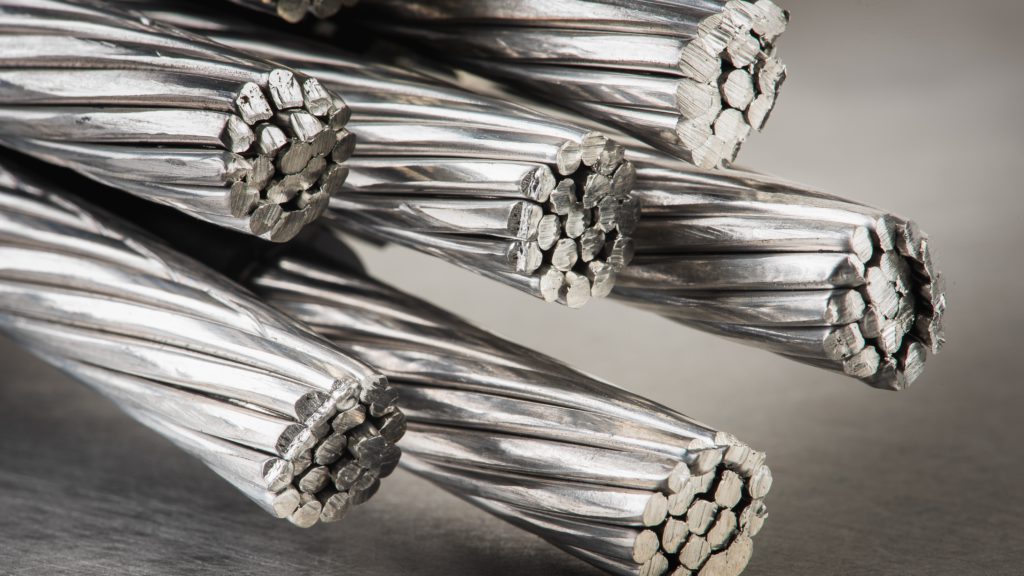Is aluminum a real threat to copper?

Copper is the major metal par excellence in terms of electrical conductivity but is not the only solution to energy transmission.
The red metal price is flying high and with the energy transition set to pick up the baton when rampant recovery-induced demand loses steam, there seems to be no end in sight.
While aluminum’s conductivity is some 40% below that of copper it does possess attractive properties – not least its density, which is just 30% of that of copper.
This means that an aluminum cable is around 52% of the weight of a copper cable with the same conductivity, a property offering handling, and installation benefits.
“Too many forecasts ignore the fact that aluminum is a serious competitor to copper in a number of high volume applications, including high- and mid-voltage power cable, busbars, transformer windings and motor windings,” says Julian Kettle, Wood Mackenzie Senior Vice President, Vice-Chair Metals and Mining.
“In fact, given its lower cost, aluminum wins out against copper under virtually any realistic long-term price scenario. Only at extreme carbon tax levels does aluminum’s higher carbon tax footprint at the margin lead to copper becoming competitive at price levels that historically would have been prohibitive”
According to Kettle, even if forecasts of $15,000-$20,000 per tonne for copper prove prescient, without commensurate aluminum prices of $5,000-7,000 per tonne copper would see massive demand destruction, which would be accompanied after some time lag by supply growth.
Furthermore, prices getting anywhere near these levels would send a strong signal to the market that the industry cannot meet the challenge of the energy transition, with the result that alternatives would be sought.
{{ commodity.name }}
{{ post.title }}
{{ post.date }}


4 Comments
Derek
Aluminium substitution for Cu cabling (larger sizes) was tried about 60 years ago with the Congo copper crisis. Al is awfull to bend and even worse to joint with electrical efficiency. I would not call it a good alternative for anything but a very few limited applications. It’s lower conductivity means cable size goes up to compensate PLUS extra for heating.
Wayne Darnsteadt
With the goal of all the EV companies to be the most efficient Aluminum will not play a part….albeit aluminum is a good product for many applications it”s required size and output loss ratio make it not applicable to small or intermediate uses that are trying to squeeze every amp or watt for area and weight……Copper will be the leader, but many secondary uses in small appliances and performance areas where size doesn’t matter is where aluminum can continue or gain usage….
John Doe
My house has aluminum cables. The special receptacles are quite expensive and bending the wires is a pain, but it can be used without issues.
Marpy
Where it makes sense for aluminum to be used as a substitute for copper, it already is. Aluminum does not work very well in many applications like residential wiring where it was attempted and did not work. Many people will not buy a house with aluminum wiring.